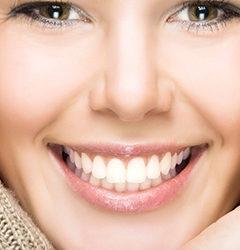Making crooked or misaligned teeth straight again is called Orthodontics. Orthodontic treatment is all about straightening or moving your teeth to give you a nice even bite and smile. Various types of Braces are a major part of orthodontics. Orthodontics is about more than just the appearance of your teeth; it also concerns the positioning of the teeth and how they work. It helps to ensure the long term health of the teeth, gums and jaws by ensuring the pressure of your bite gets spread evenly across all your teeth.
 Why should I have orthodontic treatment?
Why should I have orthodontic treatment?
Many people have crowded or crooked teeth. Orthodontic treatment will straighten the teeth or move them into a better position. This can not only improve their appearance but also the way the teeth bite together, while also making them easier to clean. Some people’s upper front teeth stick out-‘buck’ teeth are prominent and are actually much more likely to get damaged.
Orthodontic treatment using the right type of brace device can move them back into line with the rest of the upper teeth. Sometimes people’s upper and lower jaws meet in such a way that the teeth look odd and the bite in incorrect. This can put a strain on the muscles of the jaw, causing jaw and joint pain; even headaches in some cases. Orthodontic treatment may be able to correct this by moving the teeth to help you bite more evenly and greatly reduce the jaw strain.
What Does Orthodontic treatment Entail?
You can’t move teeth suddenly; they need to be trained into place and moved slowly over time, using an appliance (or ‘braces’) that encourages gradual movement. There are several different types of brace appliance:
A Removable Appliance: This is a custom-made plate which has wires and springs attached, which moves your teeth using gentle pressure. You can take it out to clean it.
A Functional Appliance: Functional appliances use the power of your own jaw muscles to change the way you’re currently biting, to help with certain types of problems.
A Fixed Appliance: A fixed appliance will guide teeth more accurately than a removable plate. It’s a similar concept but the brackets and bands of a fixed appliance are bonded to the teeth temporarily. The patient can’t take it out; it remains in place until the teeth have been moved to their optimal position. The fixed appliance will need to be adjusted over time to allow for the degrees of movement of your teeth as they start to line up properly.
What are ‘Invisible Braces’?
They are tough, clear plastic ‘aligners’ (moulds) that are used to straighten teeth. The most well-known one is ‘Invisalign’, which is custom moulded clear plastic aligner; practically invisible and designed to straighten your teeth with minimum change to your appearance whilst they are on. Invisalign should be worn for about 22 hours a day. Invisalign can be easily removed for eating, drinking, brushing and flossing. Teenagers (as long as they have all of their permanent teeth) and adults are candidates for this type of orthodontic treatment.
Is orthodontic work permanent?
It depends on the patient’s age and on the condition being treated. It’s normal to have a minor degree of tooth movement over the course of your life, but if you have orthodontic treatment as an adult it’s unusual for the teeth to move sufficiently to need another major treatment. Your orthodontist will evaluate your needs and explain to you in detail what you can expect of your treatment, so all your questions will be answered.
 Why should I have orthodontic treatment?
Why should I have orthodontic treatment?